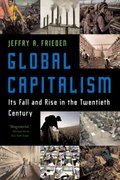Question
Suppose an economy has two years' worth of data, years 1 and 2. Suppose there are also two goods, bread and corn. Suppose in year
Suppose an economy has two years' worth of data, years 1 and 2. Suppose there are also two goods, bread and corn. Suppose in year one
fifty units of corn are sold at a price of 1 $ and 20 units of bread are
sold at a price of 2 $. Suppose in year two, 60 units of corn are sold
at a price of 1.5 $ and 80 units of bread are sold at a price of 2.05
$. Compute nominal GDP in both periods. Compute real GDP under
both definitions of a base year. Compute also a chain weighted real
GDP series. For all three measures, compute the GDP deflator. In
addition, compute a CPI's for each base year assuming total consumption in the base year forms the basket of goods for measurement. What
2
are the implications for these measures for the amount of inflation in
this economy. [Note, you should have five candidate measures]. What
about the amount of economic growth? Suppose that corn in year 2
is twice as valuable as corn in year 1 to consumers in terms of their
enjoyment from its consumption (or in terms of its nutritional value).
How would your above calculations change numerically if we want real
GDP growth to include improvements in quality? [Warning: Chain
weighting is done over different base year sequences of GDP values not
over different commodities.]
Step by Step Solution
There are 3 Steps involved in it
Step: 1

Get Instant Access to Expert-Tailored Solutions
See step-by-step solutions with expert insights and AI powered tools for academic success
Step: 2

Step: 3

Ace Your Homework with AI
Get the answers you need in no time with our AI-driven, step-by-step assistance
Get Started


